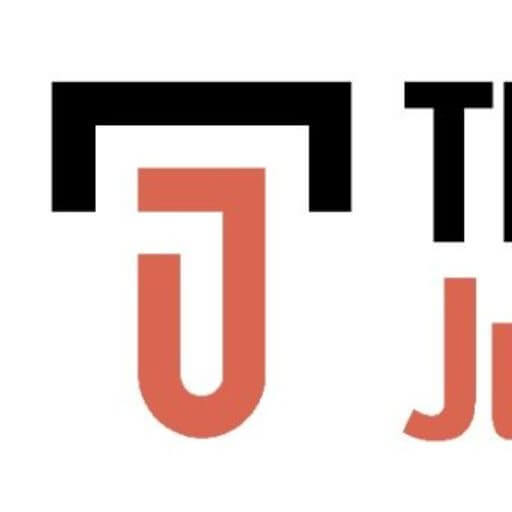Understanding and upholding international humanitarian law is crucial for promoting humanity and mitigating the devastating impact of war on individuals and communities.
It’s been few months since many innocent residents of Israel and Palestine are struggling to survive due to the outbreak of war.
Even though these sad events characterized wartime, there are wartime laws and the International Humanitarian Law is definitely one important law that tends to limit war casualties and respect the rights of humans.
Overview of the Israel-Hamas war
The Israel-Hamas conflict remains a deeply rooted and multifaceted issue with political, historical, and humanitarian dimensions
The conflict has a complex history marked by a series of wars, conflicts, and periods of tension. Here is a brief overview;
The roots of the conflict date back to the late 19th and early 20th centuries when nationalist movements, including Zionism, gained momentum in the Middle East. Tensions increased with the establishment of the State of Israel in 1948.
- 1948 Arab-Israeli War: Following Israel’s declaration of independence, neighboring Arab states, including Egypt, Jordan, and Syria, attacked Israel, leading to the 1948 Arab-Israeli War.
- Six-Day War (1967): Tensions escalated, leading to the Six-Day War. Israel occupied the West Bank, East Jerusalem, the Gaza Strip, the Sinai Peninsula, and the Golan Heights.
- First Intifada (1987-1993): Palestinians, including elements associated with Hamas, began an uprising against Israeli rule in the occupied territories.
- Oslo Accords (1993): The Oslo Peace Process aimed at resolving the Israeli-Palestinian conflict. However, challenges persisted.
- Hamas Formation: Hamas, an Islamist organization, was founded in 1987 during the First Intifada. It gained popularity for its resistance against Israeli occupation.
- Second Intifada (2000-2005): Renewed violence erupted, marked by suicide bombings and Israeli military operations.
- Disengagement from Gaza (2005): Israel unilaterally withdrew from the Gaza Strip, dismantling settlements. However, tensions continued.
- Hamas in Gaza: In 2007, Hamas took control of Gaza after violent clashes with Fatah, leading to a political divide between the West Bank and Gaza.
- Operation Cast Lead (2008-2009): A major conflict erupted as Israel launched a military operation in response to rocket attacks from Gaza.
- Gaza Blockade: Israel imposed a blockade on Gaza, restricting the movement of goods and people, citing security concerns.
- Operation Pillar of Defense (2012): Another round of conflict occurred, with both sides engaging in military actions.
- Operation Protective Edge (2014): A significant conflict erupted, resulting in extensive casualties and destruction.
- Ongoing Tensions: Periodic flare-ups, rocket attacks, and clashes continue, with international efforts to broker ceasefires and long-term solutions.
The current state of the war
On October 7, 2023, a war broke out between the Israeli military force and the Hamas-led Palestinian military.
The attack started in the morning of October 7 with a barrage of over 5000 rockets launched from the Gaza Strip against the Israelis and the immediate follow-up of 3000 Palestinian militants who breached the state’s barrier.
In the initial stage, the attack featured the death of over a dozen civilians in a fierce massacre and razing of their homes.
The invasion created tension while some nations described it as a terrorist attack until Hamas declared it was a retaliation to the Desecration of the Al-Aqsa Mosque”, the Gaza Strip blockade, Israeli settlements and settler violence”.
Read also: Iran court orders US to pay $50bn for assassination of top Iranian general Qasem
In the meantime, the belligerent states have lost over 22, 000 innocent citizens to the war while over 1.7 million are currently reportedly displaced from their homes.
On October 14, another report also informed that over 2 million citizens of Gaza tend to die of thirst as they have already run out of water supply.
This was described by the (United Nations) UN Relief and Works Agency for Palestine Refugees in the Near East, UNRWA, commissioner General, Philippe Lazzarini, as a matter of life and death.
Lazzarini said, “It has become a matter of life and death. It is a must; fuel needs to be delivered now into Gaza to make water available for 2 million people,” said Philippe Lazzarini, UNRWA Commissioner-General.
Many reactions have been captured by various media on the inhuman exercise that follows this war.
A typical example is the gesticulation image of an unknown Palestinian man captured lamenting as an injured lady was extracted from the rubble of collapsed buildings in Khan Younis in southern Gaza.
Apart from this, a child was also captured crying about the unpleasant conditions that take away livelihood from civilians.
A total estimate of over 2000 people have also been reported missing from both war parties.

Source: google/ Compilation of civilians crying and lamenting about the effect of the war on them by Popoola Ademola. The Jurist
It is generally acknowledged that casualties which include loss of lives and properties precede wars, which today seem to become norms, uninterrupted and underreported.
Latest data from Wikipedia show that as of December 25, more than 22,000 Palestinians and Israelis have been killed overall in the war, including 68 journalists (61 Palestinian, 4 Israeli and 3 Lebanese) and over 135 UNRWA aid workers.
In the Gaza Strip: 21,320+ were reportedly killed, 55,603+ wounded and 7,000+ are currently missing.
Israel also sustained casualties. According to reports, 1,375 have been killed, 8,787+ wounded, 250 captured or abducted and 5 missing.
But, did you know?
- That human right which includes the right of civilians to live and be protected has been stipulated, entrenched and extended to the period of war between States.
- That there are also limitations to the use of weapons during wars
- That wounded and long-lasting injury or instructions are crimes during wars.
Unfortunately, these unconscious norms have also been played out in the war between Israel and Hamas in 2023, while many are not taken cognizant and conscious of.
Many think destruction and killing of innocents are norms but in the reality of international laws and human law, such rigorous activities during an armed conflict constitute violation of the International Humanitarian Law of 1864.
For enlightenment and insight, The Jurist has come up with this report to educate and call the Nations of the world to the consciousness of humanity, that is, human rights, during war and beyond.
According to a document obtained from the International Committee of the Red Cross, the ICRC website comprises updated signatures of States for the application of the IHL.
Israel was found in the IHL treaties with the dates of her signatories.

Source: IHL databases.icrc.org / IHL treaties of Israel and other state
The International Humanitarian Law also known as the Law of War is a set of international rules and principles established to protect the rights of civilians and any other not participating in armed conflict.
The IHL is a part of public international law, comprising mainly treaties, customary international law and general principles of law.
The law originated from the 1863-64 convention of Geneva, with the sole purpose of restricting belligerents’ attacks on lives and properties and predominantly to constrain unaffordable casualties during wars.
One of the core principles of the IHL is to distinguish between civilians and combatants during war.
Who is a civilian during a war
A civilian is any individual not belonging to or participating in combat which includes foreigners and refugees.
This includes, children, expectant mothers, mothers of young children, men not participating in war such as medical personnel, civilians, lawyers, journalist, wounded soldiers are also included, military doctors and other non-participants.
IHL covers the “protection for wounded, sick and shipwrecked members of armed forces; treatment of prisoners of war and other persons detained in connection with an armed conflict; protection for the civilian population and civilian objects; and restrictions on the use of certain weapons and methods of warfare”.
It draws its source and standings from the 1864 Geneva Convention for the Amelioration of the Condition of the Wounded in Armies in the Field and the 1868 Declaration of Saint Petersburg, which outlawed the use of certain ammunition in wartime.
“The four Geneva Conventions of 1949 (GC I, II, III and IV), which have been universally accepted to or ratified, constitute the core treaties of IHL. The Conventions have been supplemented by Additional Protocols I and II of 1977 (AP I and AP II), relating to the protection of victims of international and non-international armed conflicts respectively; and by Additional Protocol III of 2005 (AP III), relating to an additional distinctive emblem (the red crystal). In conclusion, the Costomaru court is also a core source of this law”.
The source of the IHL
The IHL operates on principles and rules drawn to protect civilians. War crimes constitute what the IHL wants to treat.
In simple terms, the IHL warned that no civilian during the war should be intentionally attacked while intentional military attack on others should be restricted to areas where there would be a wide range of civilian casualties if the attack took place.
Any attack that doesn’t apply to these is seen as a violation of the treaties and is declared a crime of war.
Major crimes under IHL
There are four major crimes recognized under IHL. Although under each major crime, there is a sub-crime.
- Crimes against humanity
- Genocide
- War crimes
- Crime of aggression (between interstate)
What does the law says
Prohibition of direct or conscious attacks on civilians
As an entrenchment to the law on human rights during war, the IHL also prohibits the intentional killing of civilians through any means of weapon including bombing.
It is quite understandable that there would be a recount of casualties in wartime but international law in its pursuit to limit this damages and curtail the excess of belligerent combatants emanated some laws to guide the event surrounding the engagement of war (jus ad bellum) and to respect human right in such event (jus in bello).
Any violation of these laws is regarded as a war crime.
Prohibition of attacks on wounded soldiers
Similarly, this law has also included that the rights of wounded soldiers should be observed in wartime.
Prohibition of attack on surrendered State
Once there is a declaration of surrender between two States during the period of war, this law also covers every soldier or civilian of the declared State. Any further harm to either the combatants or civilians is seen as a violation of this treaty.
Prohibition of graveous attacks on civilian
The IHL also discourage the use of attacks that can cause extensive damage to civilians. This included the act of immolation and decapacitation.
Prohibition of the use of dangerous weapon
This war law also prohibited the use of some weapon which includes, biological weapon, exploding bullets, chemical weapons, binding laser weapons and anti-personnel mines.
Prohibition of long-lasting damages to human or properties
In order to also reduce damages to properties and lives, any form of attack which tends to inflict or cause damage that would not possibly go through repair is also seen as an offence to the Humanitarian law.
When is IHL applicable
Humanitarian law is applicable or commences its application immediately after a war shootout.

Infographic design of Laws floated during the Israel-Hamas war, by Popoola Ademola. The Jurist
Did the Israel-Gaza War respect the IH Law?
According to several reports, the ongoing war between Israel and Hama has various forms of violation of the IHL.
However, some are still under finding as there are ongoing investigations into any violation of this law in the armed conflict.
Some of these reports include the unspeakable atrociousness of immolation, decapitation, and sexual violence.
The result of the assault reported by Hamas was found to be disturbing. Due to the disturbing state of the report, the event stimulated a lot of reaction which prompted for quick investigation to establish the facts of the assault.
Many of these reports include report witnesses from the Israel Defence Force, IDF, and the first respondent organization of the Jerusalem Base International Rescue Unit, ZAKA, claimed that the attack was filled with the act of decapitation of infants.
“They claimed to have seen the bodies of beheaded infants at the Kfar Aza massacre site,” a ZAKA volunteer reported.
Meanwhile, some news outlets like the US-based international news platform, the National Broadcasting Company, NBC NEWS and others have come out declaring this claim as inaccurate, while the Cable News Network, CNN also claimed there was no evidence to support the claims.
The act of rape and sexual violence has been said to be reported by many International media while some others claimed that such reports are not admissible yet as the war is still early.
On 20 October, the body remains of war victims were displayed at Israel’s Forensic Pathology Center, which subsequently suggested that the hands of some of these bodies were tied together and later immolated.
Despite the debunking of fake news and posts, by the end of the month of October over 1,500 Israelis had been killed while over 8,000 Palestinians had also been killed in the attack.
The pathetic situation is the report of innocent children amounting to 3,000 who have fallen victim to the casualties of the war. That is, over 3 thousand children have been recorded to have lost their lives in the war.
This is a violation of the treaty to which Israel belongs, the International Humanitarian Law and the world is watching and hoping for the end of the war and the application of the law by the two States.
What you should know
- Purpose: IHL seeks to protect individuals who are not or are no longer participating in the hostilities and restricts the means and methods of warfare.
- Applicability: It applies in armed conflicts, both international (between states) and non-international (within the borders of a single state).
- Geneva Conventions: The cornerstone of IHL is the four Geneva Conventions of 1949, which address the treatment of wounded and sick soldiers on land and at sea, the treatment of prisoners of war, and the protection of civilians in times of war.
- Additional Protocols: The Additional Protocols of 1977 further developed IHL, providing additional protections for victims of armed conflicts. Protocol I relates to international armed conflicts, while Protocol II relates to non-international armed conflicts.
- Principles: IHL is guided by key principles, including distinction (combatants vs. non-combatants), proportionality (limiting harm to civilians), and humanity (prohibiting actions that cause unnecessary suffering).
- War Crimes: IHL identifies certain acts as war crimes, such as intentional targeting of civilians, torture, and inhumane treatment.
- Protecting Victims: IHL emphasizes the protection of vulnerable groups, including civilians, prisoners of war, and the wounded. Medical personnel and humanitarian workers are also granted protection.
- International Criminal Court (ICC): The ICC is a judicial body that prosecutes individuals for the most serious crimes of international concern, including war crimes.
- Customary International Law: Some aspects of IHL have become customary international law, binding on all states, even if they haven’t ratified specific treaties.
- Challenges: Despite its importance, compliance with IHL can be challenging during modern conflicts, where non-state actors play significant roles, and asymmetrical warfare is common.




















Leave a Reply
View Comments